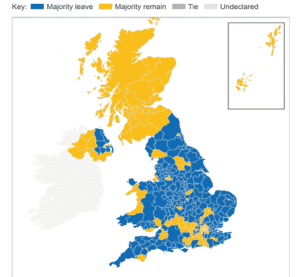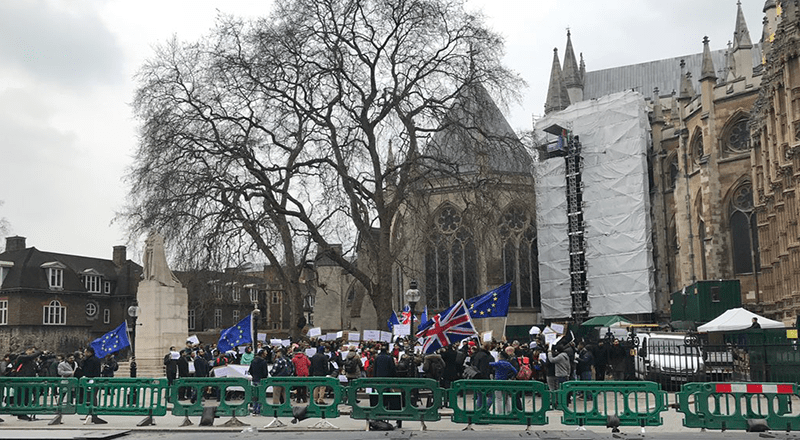“Isn’t that a clothing brand?” said a West Liberty University student when asked what they knew about Brexit. However, Brexit is not a fashion brand but rather the name given to the process of Britain leaving the  Photo Credit: BBC.com[/caption]
Photo Credit: BBC.com[/caption]
Britain joined the EU in 1973 but the relationship has always been strained. The UK opted to keep their currency of Pound Sterling rather than switch to join the Euro. Various rules made Britain uncomfortable over the years with support for the EU swaying. As part of his election campaign in 2015, the leader of the Conservative Party, David Cameron, promised that if he was elected as Prime Minister, he would hold a referendum on Britain’s EU membership. The Conservatives won a majority in Parliament making Cameron Prime Minister so in June 2016, the EU referendum was held. Cameron resigned following the results making Theresa May the new Prime Minister.
What were the referendum results like?
The referendum results were very close. The leave campaign won with 52% of the vote. Scotland, Northern Ireland and London all overwhelmingly voted to remain which has brought about questions of Scottish independence and Irish unification. Despite the strong remain support in certain areas, the leave campaign won, and the date was set for the UK to be fully withdrawn from the EU by March 29th, 2019.
Why did Britain vote to leave?
Calls for Brexit came at a time when Europe was suffering from an immigration crisis. The EU decided that each member nation would have to take in a minimum number of immigrants which was unpopular among many Brits. Many saw this as the UK being forced to do something they did not want which they felt had been happening too much. The leave campaign was based on taking back control from the EU which was a popular sentiment at the time.
What is happening now?
Britain has been in negotiation with the EU since it voted to leave in 2016. UK politicians are still struggling to agree on the best way forward. An extension has been given for the UK’s withdrawal so that a deal can be agreed upon. Some want to see Britain entirely remove itself from European affairs – a ‘hard’, or ‘no deal’ Brexit – whilst others want to protect trade pathways and keep some regulations – a ‘soft’ Brexit. Many are calling for a second referendum, with the idea being that the public were not well enough informed to make a decision back in 2016 to know what Brexit would really mean and some want it to be cancelled entirely.

What comes next?
Britain’s future with the EU is, for now, unclear. Members of Parliament are still trying to decide how to proceed and Theresa May is still trying to salvage a deal with the EU. For the next few months the discussions over Brexit will be vital in deciding the UK’s next steps.
Though the impact is not direct, Brexit does have some implications for the US. Britain leaving the EU would weaken the Pound which would affect the US economy and its trading abilities. It would also change the trading relationship between the UK and the US as the UK would no longer be part of a major economic block power. Due to the current uncertain nature of Brexit, the extent or the type of impact the Brexit will have on America is still unclear, but it will definitely hold some weight in US negotiations of trade deals in the future.
Photo Credit: theflagshop.com








